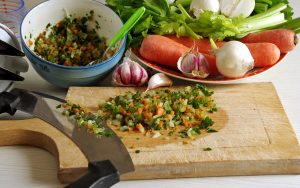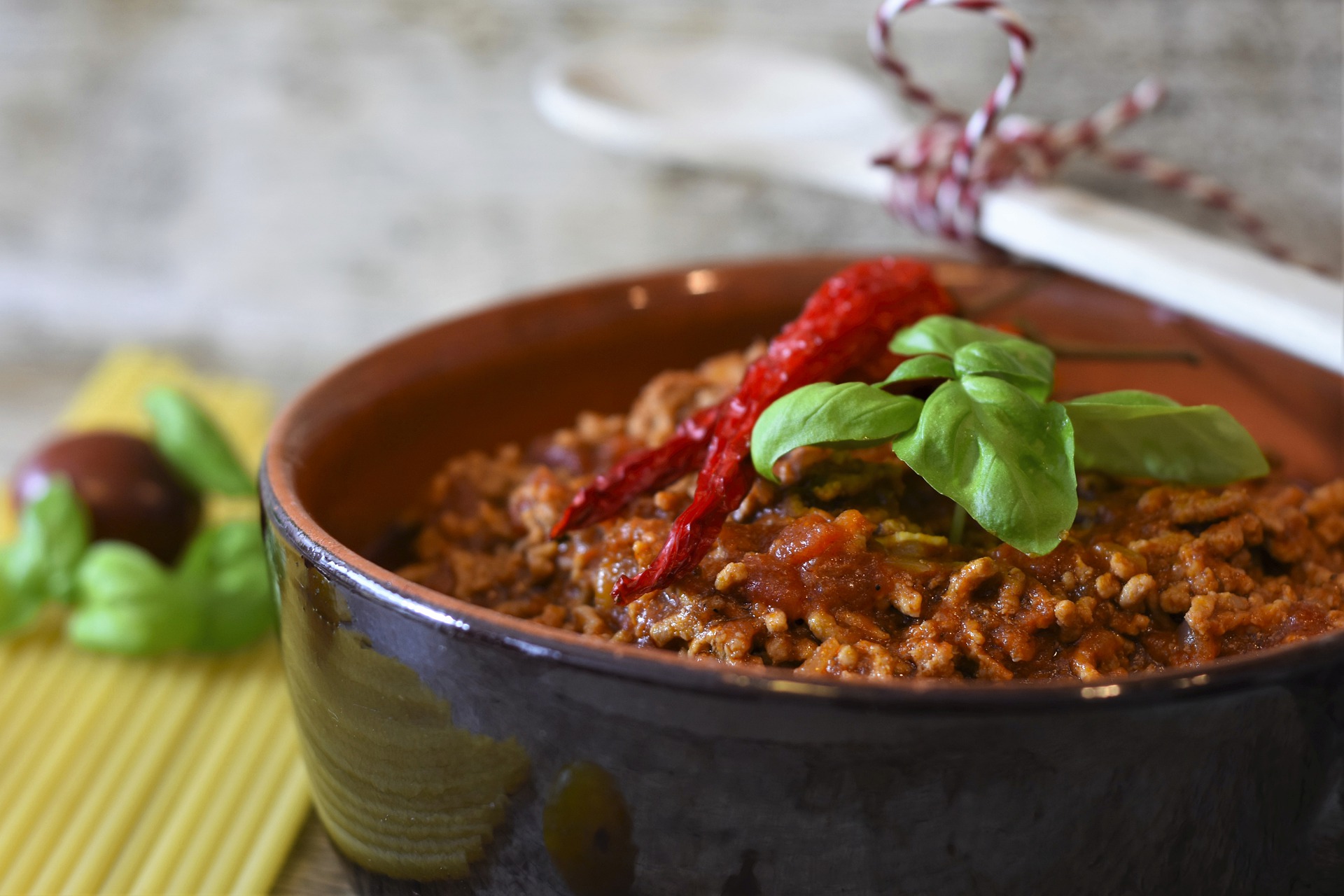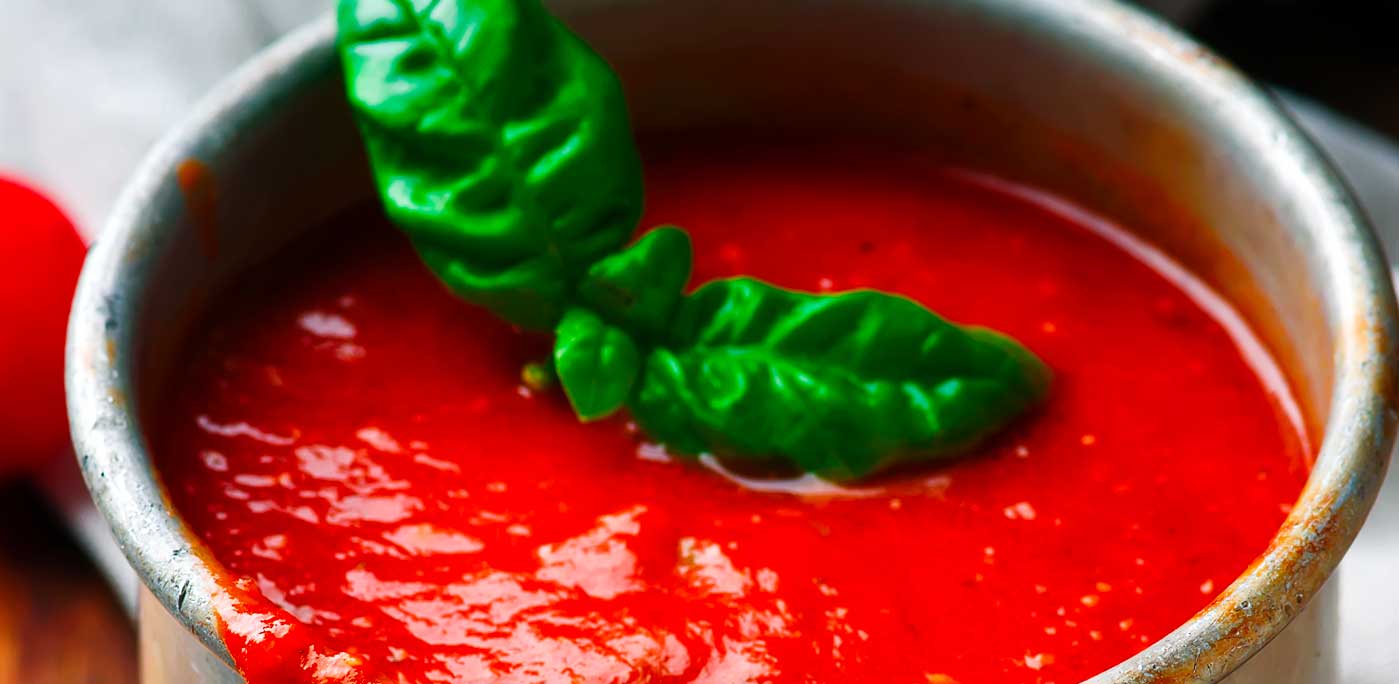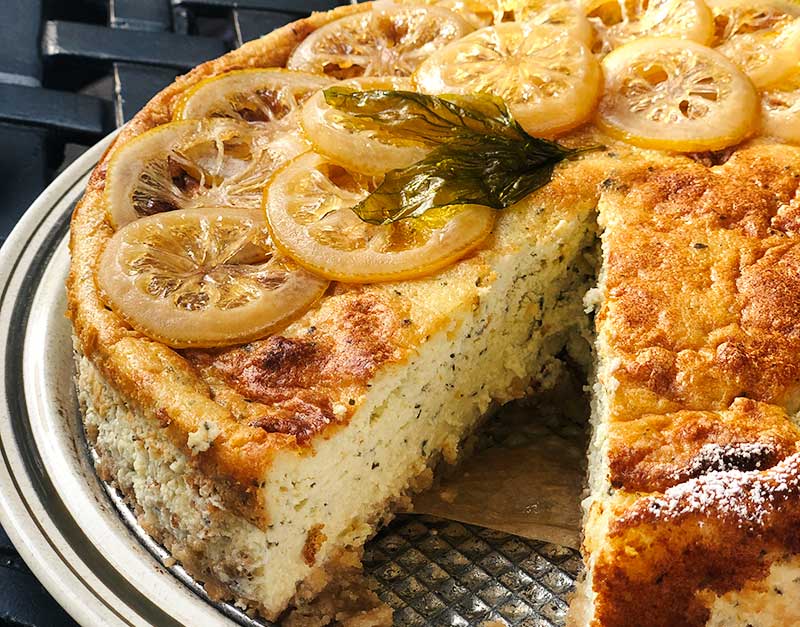Growing up, I remember sitting at the kitchen table on a weekend morning watching as my mother chopped mounds of onion, celery and carrots to begin her Sunday meat sauce. Soon the aroma of the onion gently sautéing in olive oil had my mouth watering. She patiently waited until the onions had softened to add in the carrots and celery and it was at that point that I was finally allowed to help stir the pot. Little did I know that those humble ingredients would form the basis for so many of the dishes I cook today. Nor did I realize that she was making what is called a battuto in Italian.
The battuto is the simple foundation for many Italian dishes and historically was typically a combination of onion, parsley and lard. Today, onion, celery, carrots and sometimes garlic are typical. Depending on the cook, the region and the recipe, the battuto can change but it is this humble essence that infuses the dish with so much flavor as it almost melts into the background allowing other ingredients to shine through. The battuto becomes a soffritto when the vegetables are gently sautéed in fat, usually olive oil or butter. At times, meats like pancetta can be added.
So how do you make a good battuto? Firstly, you want to start by cooking the onion slowly over medium or medium low heat. This will allow the onion to become translucent and soft, almost melting into the fat. Then add in the other chopped vegetables such as the carrot and celery. If the recipe calls for pancetta, sauté the onion and pancetta together over medium low heat, allowing the fat to render from the meat and soften the onion. Be sure to keep the heat low so as to not brown the vegetables. Allow them to simmer slowly, keeping an eye out to ensure they are not cooking to quickly.
So what to make once you practice making that soffritto? How about a tasty, soul-satisfying Bolognese to toss over some pasta? There are probably as many versions of this sauce as there are versions of battuti. So before I go further and risk insulting Italian grandmothers that may disagree, the recipe below is my version of Bolognese. Your mother or grandmother’s version may differ but this is the way my mother made hers and I continue to make in my kitchen today. How important is adding the milk? It is said to tenderize the meat. True? Who knows – but I feel good adding it because my mother did. Should I use red or white wine? Mom used whatever was on hand. Did my mother use an immersion blender? Heck no! But I like my Bolognese on the smooth side and not too chunky. So feel free to experiment or use your version – simply feel good that you now know what that onion, carrot and celery combination is actually called.
Buon appetito!

Bolognese Ragu
Ingredients:
•1 tablespoon olive oil
•1 tablespoon butter
•4 ounces pancetta, finely diced
•1 large onion, finely chopped
•2 carrots, finely chopped
•2 celery stalks with leaves, chopped
•1 pound ground beef chuck
•1 pound ground pork
•1 cup whole milk
•1 cup dry red or white wine
•1 (28-ounce) can imported Italian tomatoes
•Kosher salt
•Freshly ground black pepper
•About ¼ cup fresh parsley, chopped plus additional
•About ¼ cup fresh basil, chopped
Special Equipment:
Immersion blender (optional)
Directions:
1. Combine the oil, butter, onion and pancetta in a heavy bottomed pot (such as a Dutch oven) over medium low heat. Gently cook the mixture until the onion is transparent and soft, and the pancetta renders most of its fat. Add the chopped carrot and celery, stirring the vegetables occasionally. Cook until softened.
2. Add the ground beef and pork to the pot. Cook, breaking up the meat with a wooden spoon, until the meat is cooked through.
3. Add in the milk and allow to simmer until the milk has almost evaporated.
4. Add in the wine. Allow to simmer until it also has evaporated. Break up the tomatoes, either by hand or using a spoon. Add to the meat. Stir to incorporate.
5. Using an immersion blender (carefully!), blend the mixture in the pot to break up large chunks and incorporate all the ingredients. (You can totally skip this step!)
6. Season with a big sprinkle of salt and a few turns of black pepper. Stir in the chopped basil and parsley.
7. Reduce heat to barely a simmer. Cover with a lid set ajar and simmer the sauce for about 3 hours, stirring occasionally. If the sauce becomes too thick, add about a ½ cup of water at a time to thin.
8. When the sauce is very thick and flavorful, adjust salt and pepper to taste. Toss with your favorite cooked pasta and a tablespoon of butter. Sprinkle with additional parsley. And pass lots of grated Parmesan on the side!
Joe and Michele Becci are a brother and sister team who love all things Italian. Together, from opposite coasts, they co-author the blog www.OurItalianTable.com.
































